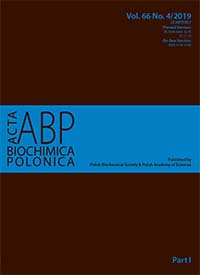Impact of developmental origin, niche mechanics and oxygen availability on osteogenic differentiation capacity of mesenchymal stem/stromal cells
Abstract
Mesenchymal Stem/Stromal Cells (MSCs) have been widely considered as a promising source of cells for tissue regeneration. Among other stem cells, they are characterized by a high osteogenic potential. Intensive studies in this field had shown that even if basic osteogenic differentiation is relatively simple, its clinical application requires more sophisticated approaches to prepare effective and safe cell therapy products. The aim of this review is to underline biological, physical and chemical factors which play a crucial role in osteogenic differentiation of MSCs. Existence of two distinct mechanisms of ossification (intramembranous and endochondral) indicate that choosing a proper source of MSCs may be critical for successful regeneration of a particular bone type. In this context, Dental Pulp Stem Cells representing a group of MSCs and originating from neural crest ( a structure responsible for development of cranial bones) are considered as the most promising for skull bone defect repair. Factors which facilitate osteogenic differentiation of MSCs include changes in forces exerted on cells during development. Thus, culturing of cells in hydrogels or on biocompatible three-dimensional scaffolds improves osteogenic differentiation of MSCs by both, the mechanotransductive and chemical impact on cells. Moreover, atmospheric oxygen concentration routinely used for cell cultures in vitro does not correspond to lower oxygen concentration present in stem cell niches. A decrease in oxygen concentration allows to create more physiological cell culture conditions, mimicking the ones in stem cell niches, which promote the MSCs stemness. Altogether, factors discussed in this review provide exciting opportunities to boost MSCs propagation and osteogenic differentiation which is crucial for successful clinical applications.
Acta Biochimica Polonica is an OpenAccess quarterly and publishes four issues a year. All contents are distributed under the Creative Commons Attribution-ShareAlike 4.0 International (CC BY 4.0) license. Everybody may use the content following terms: Attribution — You must give appropriate credit, provide a link to the license, and indicate if changes were made. You may do so in any reasonable manner, but not in any way that suggests the licensor endorses you or your use.
Copyright for all published papers © stays with the authors.
Copyright for the journal: © Polish Biochemical Society.


